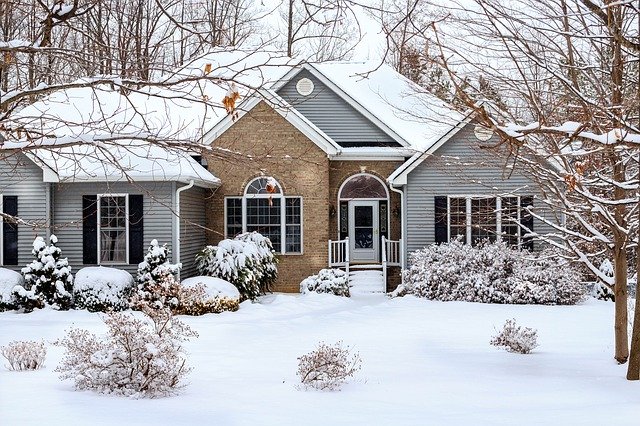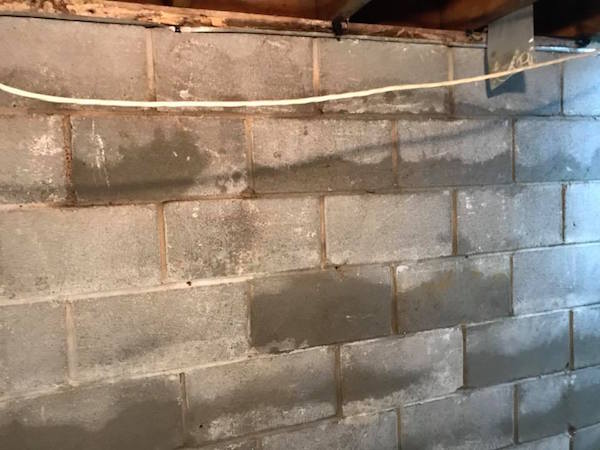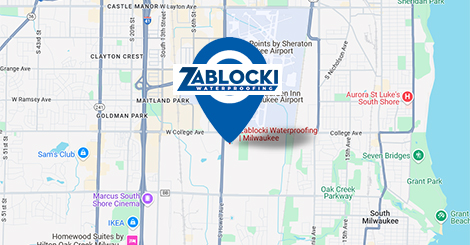 Winter has arrived and with it comes a new set of challenges to keep your basement and foundation safe and dry. Because ice and snow are water in solid form, it may seem that waterproofing your home’s foundation is not as much of a concern in winter but, well, it is.
Winter has arrived and with it comes a new set of challenges to keep your basement and foundation safe and dry. Because ice and snow are water in solid form, it may seem that waterproofing your home’s foundation is not as much of a concern in winter but, well, it is.
Here is our handy guide to the unique challenges that winter poses and how to keep your home dry all season.
Winter Water Challenges
We all know that Wisconsin winters are unpredictable in terms of precipitation. One day it could be snowing, the next freezing cold, and the next the sun comes out and melts the snow. This back and forth means there is plenty of water around during the winter to do damage to your foundation and basement walls.
Water freezes as it expands. So, as melted snow and ice hits the ground and seeps into the soil around your home, it will fill every available pocket of space. When temperatures dip below freezing, the water will turn to ice and expand, moving the soil along with it and exerting pressure on your basement walls.
Another issue is ice melt from your roof. Heat from your home can cause your roof to warm up and melt the snow that has landed there. The melted snow then runs down to your gutters and can refreeze, causing what’s called an “ice dam.” Then, when this process repeats itself, the water running down the roof has nowhere to go (because the gutters are clogged with ice), so it drips down to the soil around your home, refreezes, and causes the soil to shift.
Winter is coming: what you can do to prepare
Winter started early this year, so the time is now to take steps to protect your home from the months of precipitation to come. The most effective thing you can do to protect your home from winter weather is to tend to your gutters and downspouts. Make sure they are clear of debris so water can easily flow through. Downspouts should be angled to run water away from your home’s foundation, ideally to a gentle slope.
Next, make sure your basement stays as dry as possible. Keep doors open and run a fan to ensure air circulation. Run a dehumidifier to keep the air dry. And, if you notice cracks in your walls or other signs of water damage, call in the professionals right away.
Finally, keep your roof as clear of ice and snow as possible – you can do this by scraping off after a winter storm or calling in professionals to install heating cables around your roof; snow/ice slides; or waterproof material under your shingles.
Another strategy you might consider is adding additional insulation in your attic and filling any gaps or cracks to ensure heat cannot access your roof. This will help you avoid ice and snowmelt that can lead to ice dams around your gutters.
 When to call in the experts
When to call in the experts
If you notice cracks in your basement walls, water stains, standing water, or mold, it’s time to call in the experts at Zablocki Waterproofing. Other signs of water damage can include doors or windows around your home that do not close properly and/or cracks around door jams. These are signs that your foundation has shifted, likely due to water pressure.
If you notice any of these symptoms of water damage, do not wait. These are not issues that get better over time, but can instead become worse and worse (and more costly) the longer you wait to fix them. As soon as you notice signs of water damage, give the professionals at Zablocki Waterproofing a call.
We do not recommend trying to fill basement cracks, address water leaks inside walls, or clean up mold yourself – not only is there a high margin of error, but these tasks can actually be hazardous to your health.
Before the winter storms really start to hit this year, give Zablocki a call for a home waterproofing consultation. We have decades of experience helping Wisconsin homes stand up to all types of winter weather and know the right strategies to keep your’s warm and dry.
Looking for expert basement waterproofing and foundation repair in Milwaukee and surrounding communities? Give us a call today.





